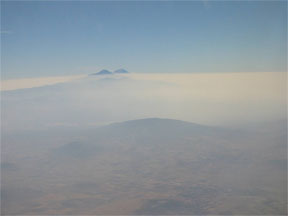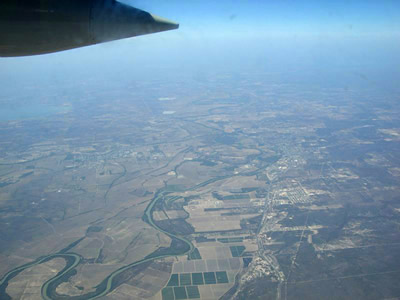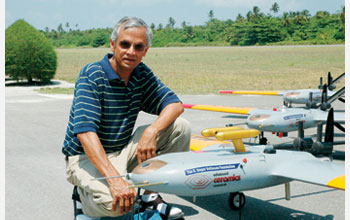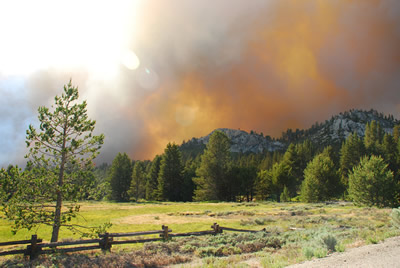Outdoor sports support an active and healthy lifestyle, except on days with poor air quality.
Click on image for full size
Source: T. Eastburn
Air Pollution and Human Health
People have to breathe the air around them. When the air is dirty, breathing it can be harmful. Air pollution can cause coughs, burning eyes, and breathing problems. These symptoms often go away as soon as the air quality improves, but not always.
In 1948, 20 people died and 6000 people became ill in Pennsylvania from air pollution. In 1952, a dense smog filled the skies of London and killed 4000 people in five days. Breathing small amounts of air pollution over many years is also considered dangerous. It may even contribute to life-threatening diseases such as cancer.
The elderly, the young, and people who are already sick are more sensitive to air pollution than others. Children’s health is at greater risk because their lungs are still growing. They also play outside more than most adults. As a result, they breathe in more pollution from cars, refineries, factories, fires, and windblown dust.
Although people have to breathe the air around them, they can take actions to keep themselves healthy. They can pay attention to air quality reports. When air quality is poor, they can stay indoors or be less active outside. Such actions can limit exposure to harmful air pollutants that can literally steal one’s breath away.
Last modified February 19, 2006 by Teri Eastburn.
You might also be interested in:

Have you ever heard of air pollution? Air pollution is not new. 700 years ago, when people started burning large amounts of coal 700 years ago in London, England, they complained about the dust and soot
...more
Scientists have been studying tiny particles in the air called aerosols. Aerosols can affect our climate, the amount of clouds in the sky, and the amount of rain that falls from clouds. Aerosols can also
...more
When you look up at the sky, you are looking at more than just air. There are also billions of tiny bits of solid and liquid floating in the air. These tiny particles are called aerosols or particulates.
...more
Scientists are sending tiny airplanes buzzing in the sky to find out how air pollution can impact weather, climate, and global warming. The tiny airplanes look like regular planes but they have only a
...more
Scientists from the National Center of Atmospheric Research (NCAR) have published a new paper about how wildfires affect air pollution. They have learned that wildfires make ozone levels high enough to
...more
Rainbows appear in the sky when there is bright sunlight and rain. Sunlight is known as visible or white light and is actually a mixture of colors. The sun's rays pass through millions of raindrops. A
...more
It takes the Earth one year to travel around the sun one time. During this year, there are four seasons: summer, autumn, winter, and spring. Each season depends on the amount of sunlight reaching the
...more















